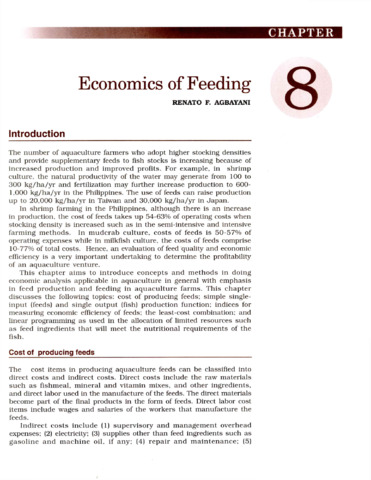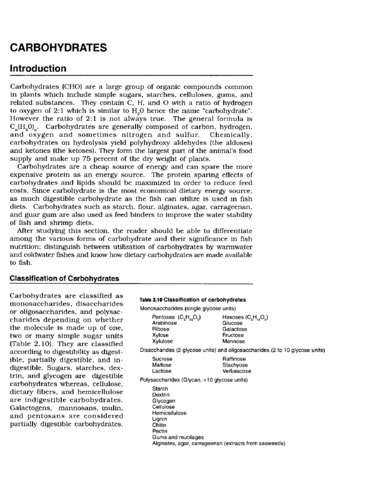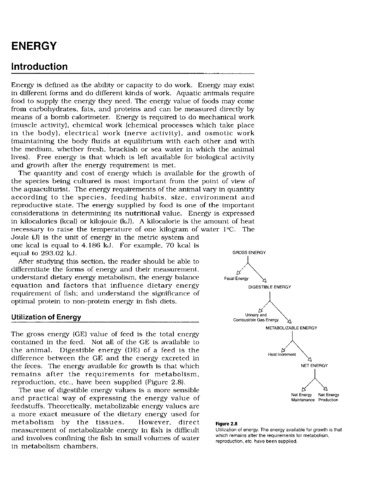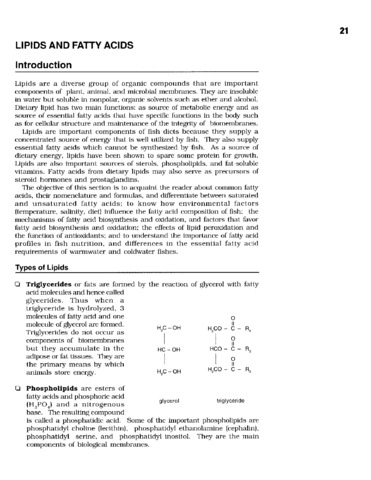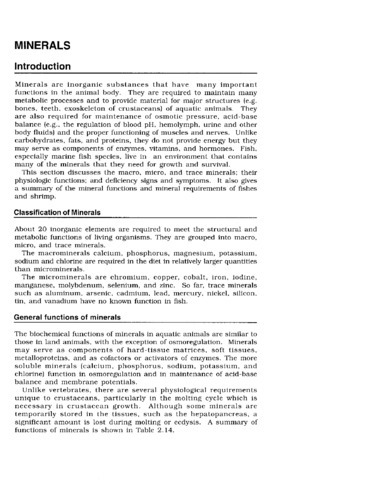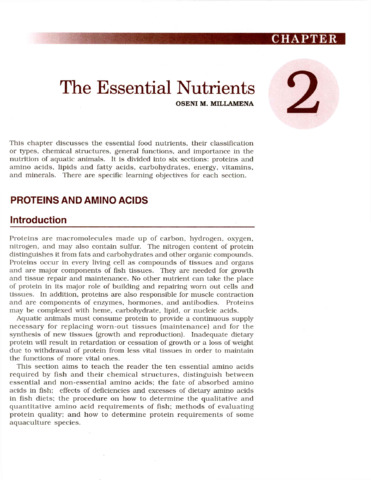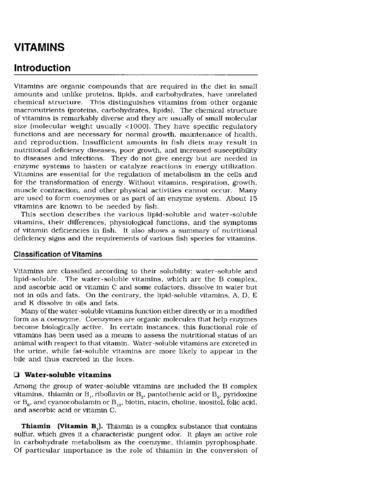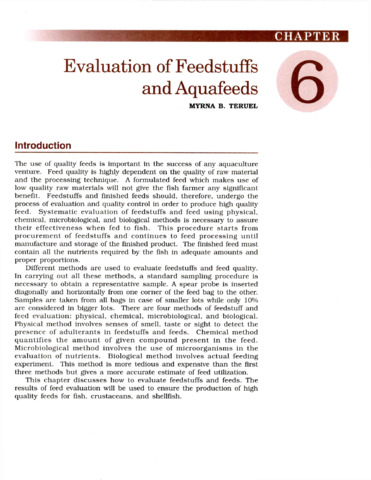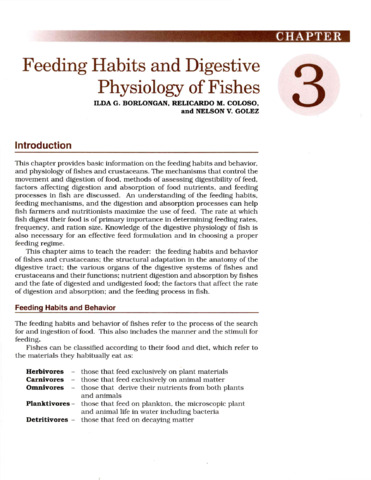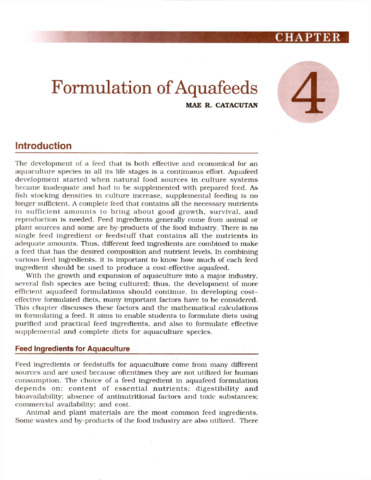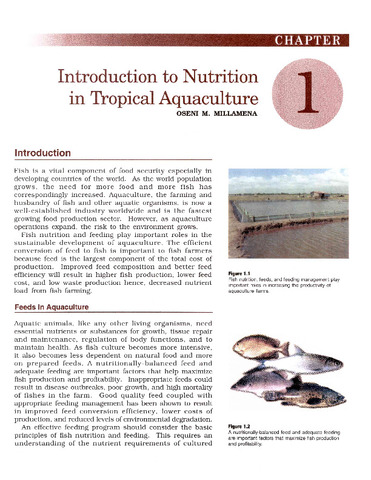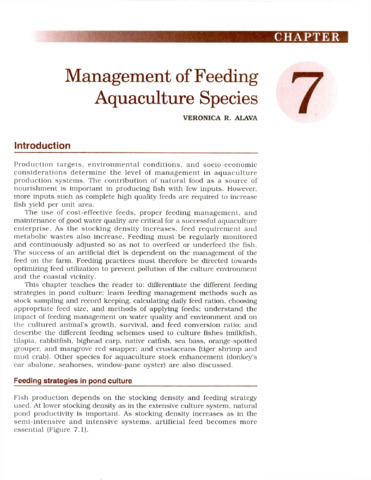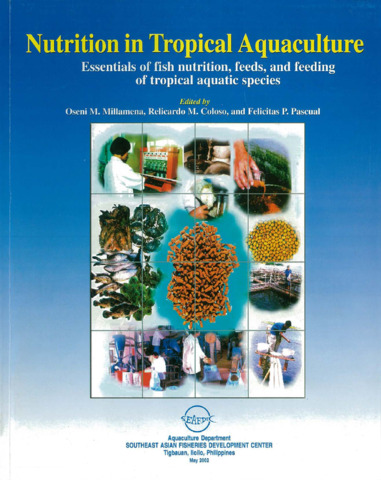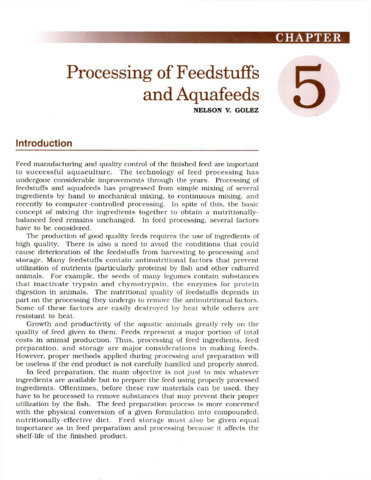Browsing Nutrition in tropical aquaculture : essentials of fish nutrition, feeds, and feeding of tropical aquatic species by Title
Now showing items 1-14 of 14
-
Economics of feeding
(Aquaculture Department, Southeast Asian Fisheries Development Center, 2002)This chapter aims to introduce concepts and methods in doing economic analysis applicable in aquaculture in general with emphasis in feed production and feeding in aquaculture farms. This chapter discusses the following ... -
The essential nutrients: Carbohydrates
(Aquaculture Department, Southeast Asian Fisheries Development Center, 2002)This section discusses the difference among the various forms of carbohydrate and their significance in fish nutrition; distinguish between utilization of carbohydrates by warmwater and coldwater fishes and know how dietary ... -
The essential nutrients: Energy
(Aquaculture Department, Southeast Asian Fisheries Development Center, 2002)After studying this section, the reader should be able to differentiate the forms of energy and their measurement. Understand dietary energy metabolism, the energy balance equation and factors that influence dietary energy ... -
The essential nutrients: Lipids and fatty acids
(Aquaculture Department, Southeast Asian Fisheries Development Center, 2002)The objective of this section is to acquaint the reader about common fatty acids, their nomenclature and formulas, and differentiate between saturated and unsaturated fatty acids; to know how environmental factors (temperature, ... -
The essential nutrients: Minerals
(Aquaculture Department, Southeast Asian Fisheries Development Center, 2002)This section discusses the macro, micro, and trace minerals; their physiologic functions; and deficiency signs and symptoms. It also gives a summary of the mineral functions and mineral requirements of fishes and shrimp. -
The essential nutrients: Proteins and amino acids
(Aquaculture Department, Southeast Asian Fisheries Development Center, 2002)This section aims to teach the reader the ten essential amino acids required by fish and their chemical structures, distinguish between essential and non-essential amino acids; the fate of absorbed amino acids in fish; ... -
The essential nutrients: Vitamins
(Aquaculture Department, Southeast Asian Fisheries Development Center, 2002)This section describes the various lipid-soluble and water-soluble vitamins, their differences, physiological functions, and the symptoms of vitamin deficiencies in fish. It also shows a summary of nutritional deficiency ... -
Evaluation of feedstuffs and aquafeeds
(Aquaculture Department, Southeast Asian Fisheries Development Center, 2002)This chapter discusses how to evaluate feedstuffs and feeds. The results of feed evaluation will be used to ensure the production of high quality feeds for fish, crustaceans, and shellfish. -
Feeding habits and digestive physiology of fishes
(Aquaculture Department, Southeast Asian Fisheries Development Center, 2002)This chapter provides basic information on the feeding habits and behavior, and physiology of fishes and crustaceans. The mechanisms that control the movement and digestion of food, methods of assessing digestibility of ... -
Formulation of aquafeeds
(Aquaculture Department, Southeast Asian Fisheries Development Center, 2002)The development of a feed that is both effective and economical for an aquaculture species in all its life stages is a continuous effort. Aquafeed development started when natural food sources in culture systems became ... -
Introduction to nutrition in tropical aquaculture
(Aquaculture Department, Southeast Asian Fisheries Development Center, 2002)Fish is a vital component of food security especially in developing countries of the world. As the world population grows, the need for more food and more fish has correspondingly increased. Aquaculture, the farming and ... -
Management of feeding aquaculture species
(Aquaculture Department, Southeast Asian Fisheries Development Center, 2002)This chapter teaches the reader to: differentiate the different feeding strategies in pond culture; learn feeding management methods such as stock sampling and record keeping, calculating daily feed ration, choosing ... -
Nutrition in tropical aquaculture: Essentials of fish nutrition, feeds, and feeding of tropical aquatic species
(Aquaculture Department, Southeast Asian Fisheries Development Center, 2002)This book is intended to teach undergraduate students the essentials of aquaculture nutrition, feed formulation, and feeding management. It serves as a reference book for researchers in aquaculture, aquaculturists, fish ... -
Processing of feedstuffs and aquafeeds
(Aquaculture Department, Southeast Asian Fisheries Development Center, 2002)This chapter will help the reader understand and appreciate the basic principles of processing, preparation, storage, and quality control in the preparation of aquafeeds. The material in this section is presented in sequence ...

